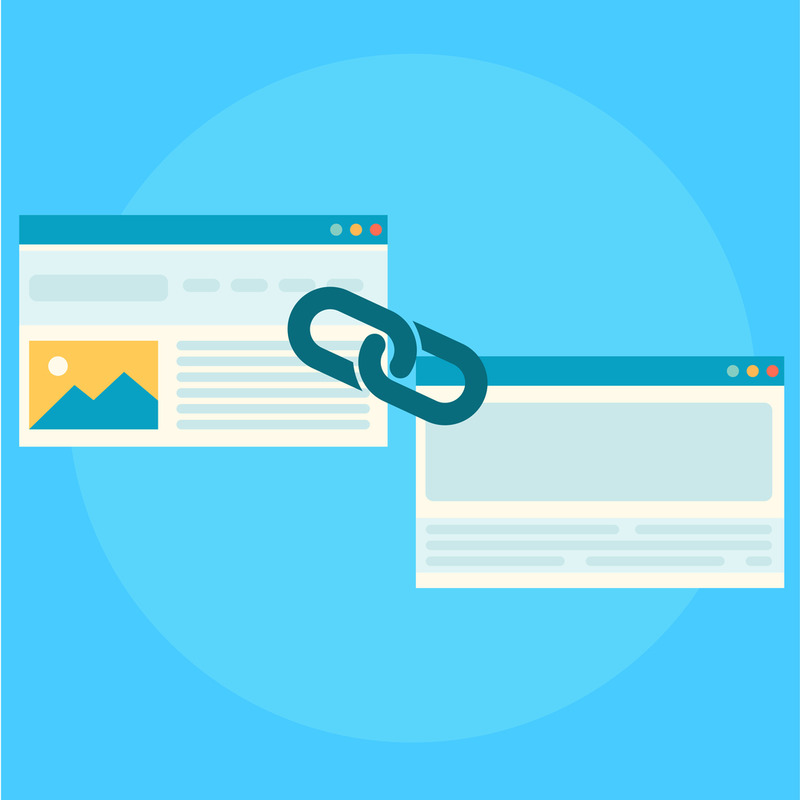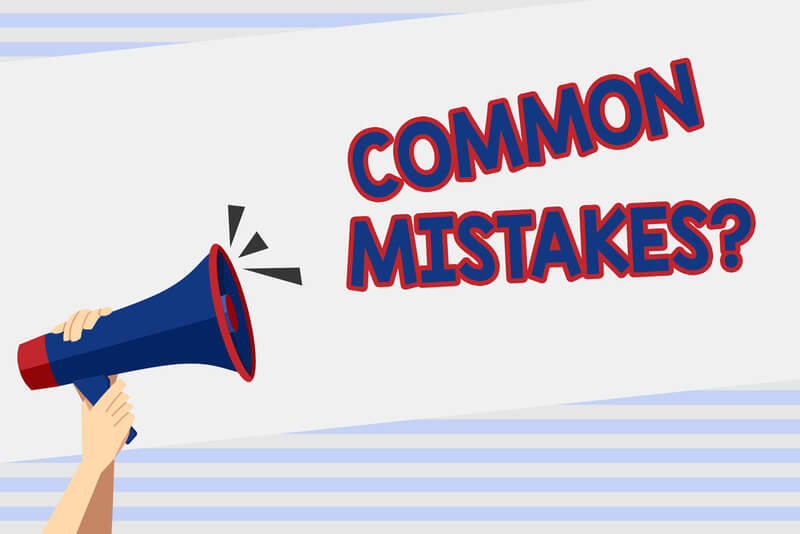Search engine optimization (SEO) requires link builders to make accessing resource pages and important information easier for any user, regardless of background.
That’s where backlinks come in.
These allow you to build credibility for your domain and reach more people through your content.
Here’s everything you need to know about link building and how to correctly add backlinks to your content to reach the most readers.
Understanding Backlinks
The number of referring domains can affect the reliability of a website.
While it may seem like a numbers game for a website, more doesn’t always equal better. There’s a lot more to backlinks that you need to understand in order to properly implement them on any of your sites.
What Are Backlinks?
Backlinks occur when another website links back to your page. This is likely due to the context of their content and how relevant yours is to theirs.
If a blog post uses your website as an external link for their source, then the link on their site is a backlink to your site.
Different types of backlinks can affect how you rank for specific searches. These can depend on your site’s content or existing information surrounding your niche.
Importance of Backlinks in SEO

Backlinks help in improving your search engine rankings. It’s one of Google’s top search ranking factors, which can affect the visibility and traffic of your webpage and domain.
By having other sites in your niche refer back to you through these links, you are provided a vote of confidence for your content and website, making it a more reliable source for users in Google’s eyes.
It also proves that your content offers value in that specific topic and is worthy of being referenced by other domains and reliable sites.
By leveraging guest posting for SEO and other similar practices, you can improve your site’s visibility and increase traffic to your domain.
Attributes of a Good Backlink
You must look into the following to know if you’re working with a good backlink.
Natural
Adding a backlink to your website should provide value to your readers and provide them with additional insight into what they’re researching.
It should NEVER be something paid for. You should not manipulate the backlink.
Unlike natural backlinks, unnatural backlinks intend to fool search engines to make them think that their website has a better reputation than it really does.
However, if Google notices that your backlink is unnatural or spammy, your site can be punished or demoted in the search engine results pages.
Be cautious if you want to build links by purchasing them since bad and unnatural links will be penalized accordingly.
Reputable
Credible web pages are more likely to rank higher in searches. Google has a PageRank algorithm to help measure the importance and reputation of a webpage.
It counts the number and quality of links to your page to estimate its importance.
It also prevents using metrics to ensure that spammers don’t abuse it as a currency to buy backlinks, which is against Google’s guidelines.
You should also consider the rel link attribute, which can be added to an HTML link. The better your backlinks without rel attribute, the more likely it will be to pass search engine reputation.
Other sites that can mimic PageRank are Moz, Ahrefs, and Semrush.
Relevant
Search engines also determine how relevant your content and backlinks are to your overall website. It checks the choice of words used as anchor text and what you’re linking to to determine how relevant it is to your overall content. It ensures that your backlinks and anchor texts aren’t filler for the sake of having content.
How to Build Backlinks
There are many ways to build links, from obtaining a broken link to writing for other blogs.
These are some of the most common ways to boost your site’s backlink profile and improve its performance in search results.
Guest Blogging

Writing a guest post is a tried and tested strategy for obtaining backlinks.
You can reach out to different sites that accept these posts. Some can offer a contributor account or a “Write for us” section for anyone who wants to get featured on their site.
Then, they can link to your site as a way to credit your contribution to the topic.
To learn about guest posting, you need to take note of the following statistics which can make up a website and affect your guest posting:
- Domain Rating: 30+. This helps eliminate low-authority websites that can harm your backlinks.
- Published: 90+ days. This helps eliminate websites that haven’t published content in a while. These are usually unresponsive to pitches for guest posts.
- Website Traffic: 5000+.This helps eliminate websites with little to no traffic.
You can use many tools online to help you determine and compare the statistics of these websites and determine which would best benefit your content.
You can discover our guest posting service and how guest blogging can further help your page by going through our different offers.
Utilizing Resource Pages
A resource page must be constantly updated so that its contextual links can stay relevant to the ever-changing information landscape.
It’s one of the most effective and straightforward ways to get backlinks, especially since there are curated lists of links for almost any topic you can think of.
Here’s how you can get backlinks by utilizing these resource pages.
Find Resource Pages in Your Industry.
Check if these sites have moved to a new URL, changed their name, stopped updating a resource or offering a service, or shut down entirely.
If the resource isn’t used anymore, it’s a great time to contact the hundreds of people still linking to this resource page.
Find Sites Still Linking to the Outdated URL.
You can put the URL of your outdated resource into a backlink-checking tool.
Check all the sites that link to the old URL. You can connect to these sites for an opportunity to work.
Focus on the highest Domain Authority (DA) sites, which you can check with link-building tools.
Reach out to those sites.
Inform the site owner regarding their outdated link through email. You can usually find their contact details on their website.
This will allow you to gently suggest including your link in its place to get you the backlink you need while giving them an active link to work with.
Pitch Your Replacement Link.
In your email, you can inform them that you’ve written content that can be supplementary to theirs and has more updated information than what was in the expired link.
Personalize your emails and include where you want to suggest your site be listed if there are no previous backlinks.
This will allow you to add value to their site twice, helping them be more updated and active.
Reclaiming Unlinked Mentions
Websites and brands that have been around for a while are more likely to be known locally or internationally.
Mentions are an easy way to get marketing without wasting money, especially for small brands and businesses.
If some sites mention your content, you can contact their owner to turn that mention into a backlink.
But before anything else, you’d need to find those unlinked mentions.
- Find unlinked mentions. You can create a Google Alert for your brand name to search for it in Google News. Use quotation marks if the mention is longer than one word. Prioritize sites with the highest Domain Authority to ensure that traffic and quality content can link back to you.
- Contact the website owner. Inform them of how you appreciated their mention of your site or brand and your thoughts on their content. Then, you can mention if they can link your site to help their audience find your brand more easily.
A quick link gap analysis can also help you find those mentions if you understand how to use these methods.
This can help make searching for unclaimed mentions easier.
Making Use of Help a Reporter Out (HARO)
This website makes connecting with journalists who write for high-authority sites easier.
You can register as a source and receive notifications through your email whenever journalists are looking for contributions. This can be paid or free, depending on your budget.
Then, you can choose those which apply to your niche. Each email will contain quotes, advice, stories, and more.
However, people who use HARO can get overwhelmed by the number of responses they can get daily. You need to be patient and have a great pitch to get the attention of these reporters.
Other platforms are Help a B2B Writer, Terkel, Qwoted, and SourceBottle. Since these have fewer users than HARO, you’re more likely to get noticed.
You can get a backlink from an official news site if your answer is picked up. While you won’t be successful every time, they can help you build authoritative backlinks, especially if you respond to them strategically.
Reaching Out to Journalists

It’s also essential to get on different journalists’ radars. You can connect with them through social media to help them know about your expertise.
You can state what you do and share your expertise. Show them that you can add unique value to what they already have and how your input will help other readers of their content.
For e-commerce sites, seeing your name linked to logos from well-known publications can help make you more credible.
You can start with a small and local publication and slowly work up to more significant news sites to build your credibility over time.
Free Methods to Build Backlinks
While the previous strategies might need a budget, you don’t always need to spend money to find a link-building tactic that works for your own website.
Here are a few link-building strategies you can test on your own page to get more links for your site.
Build Relationships
It would be best to connect with people from your niche to continuously build high-quality backlinks for free.
Participate in discussions from relevant communities and be present in blogs, social groups, online forums, Facebook groups, and any other way to connect with people online.
Ensure that you provide real value that can encourage conversation with others. Interesting comments can easily make you memorable to other people.
Continuously Create Amazing Content
You don’t always need to spend a lot to have outstanding content. It’s the best and most natural way to build quality links.
In fact, many marketers suggest that everyone’s primary focus should be to create high-quality content.
Create statistics posts about data relevant to your industry or business, create super linkable content, produce an infographic or how-to guide, build listicles, and other forms of long-form content.
Get Interviewed on Podcasts
There are many podcasts for different niches.
Appearing in one helps you get a backlink while promoting your brand to people who don’t read blog posts often.
Connect with relevant podcasts and reach more people by contacting their owners and scoring an interview.
Use Google Search Operators to Find What You Need

This will help you find everything you need faster than searching for a keyword.
It can increase the site’s relevancy or find the appropriate competitor links you need.
Whether you’re finding a blog post or searching for a niche site, doing keyword research this way can make things easier for you.
Answer Questions on Q&A Sites
These sites are great opportunities for you and your business to gain more exposure.
This link-building strategy doesn’t require you to focus on keywords and anchor text because people go on forums for easy answers.
Instead, you can provide the most relevant links only when you think it can help solve someone’s problems.
It’s also a great place to connect with other people who can be your future collaborators. It can help you find new topics you can tackle in your blog and connect you with like-minded individuals.
Set Up Internal Links
Sites linking to a specific webpage don’t have to be from other website owners.
It helps point your user to other relevant content in your domain, making it easier to navigate to other helpful resources as needed.
However, you need to be careful when using this strategy. Ensure that internal links are correct and all point to the site you want to rank for.
These produce backlinks within your domain and provide supplementary information to related questions about your niche.
It can help multiple pages on your domain rank in search results and increase traffic to your site.
Broken Link Building Strategy
There are many broken links online, which you can get for little to no money and link your own site to instead. These can be an old resource page or broken pages of the same niche.
Building a single broken link takes plenty of effort, let alone finding broken links with a good history.
However, patience and hard work can be a great way to build your link profile.
Case Studies and Examples of Good Backlinking Practices

Now that you know more about how to get high-quality backlinks, you might be curious to see them in action.
Before you get backlinks for your site, it’s best to understand how a simple link can affect content in search results.
Here are a few examples and case studies to guide you into using good backlinking practices for your content.
Case Study 1
One of the most common examples of good backlinking is how local listings and directories show the website link of a business whenever you do a simple Google search.
These are the easiest backlinks to work with since they’re already guaranteed.
Check out places like Google My Business to see how a business shows up on Google.
If you compare the business’ backlink there versus other websites, such as Yelp or Facebook, it will redirect any user to the homepage of the business’ website.
Most directories have a submission process that allows you to submit a description.
They’re the first step to having a reliable backlink for your site, regardless of your niche.
Case Study 2
Cold email outreach is another excellent example of building a link profile. However, it’s been misused quite frequently, making some users think it’s spam or other dangerous email.
That said, one case study showed that it’s possible to create an effective email outreach campaign that can help improve your site’s backlinking.
Their case study landed them over 1,500 backlinks with an average domain rating of 68.
It showed that they were able to get 13.7 conversion rates from guest posting and claiming unlinked mentions, giving them a chance to reach out to the different site owners they sent an email to for linking.
Short emails and follow-ups have also been shown to increase the chances of getting a response from these sites.
Case Study 3
External links from other websites are not the only way to get backlinks. You can use internal linking to help lead a user from one page in your domain to another page in the same domain.
This will help them go to a related reading with just a link to click on. You can easily link to a resource page or another page within your domain.
However, it’s important also to do this correctly so your user ends up on a relevant page.
An example was how The Guardian was able to use their link to point users to a specific landing page for the World Cup back in 2014, which immensely helped it rank on search engine results pages.
In contrast, Mail Online failed to properly set up its inbound links to consistently link users to its World Cup page, with its links pointing to less relevant pages.
As a result, their articles competed with their own World Cup landing page, a mistake that cost them a chance to appear on the first page of Google.
Common Mistakes in Building Backlinks

Now that you know what makes backlinks important, you might be in a rush to add them to your own page.
While it can help boost your website’s rankings, remember that it can also harm your site if it’s not done correctly.
Even though other websites resort to this, you should use this awareness to avoid any mistakes that can lower your rankings when you get backlinks.
These are the common mistakes you need to avoid when you’re link-building.
Low-Quality Backlinks
Bad or irrelevant sites do more harm than good for any website owner, especially since they can lower your search engine rankings.
Having a large number of these links can be like weeds for your website that will prevent you from growing.
Remember to use the available free tools online to double-check the credibility of the websites you connect with.
It’s also important to ensure that your content is valuable and correct according to Google’s helpful content update, which focuses on providing users with the most helpful information for their queries.
Remember that it’s better to have a few high-quality links instead of a ton of useless or irrelevant ones.
Quick Backlink Schemes
Building backlinks isn’t about speed but rather consistency and care. Simply going for quick schemes can put you at risk of getting bad links that can damage your rankings.
New website owners tend to think that more means better. However, you might end up with too many links in a matter of days or weeks. These can easily be detected as a shady link-building strategy and can result in you being penalized by search engines.
Focus on a more natural backlink profile. While it can take some time to build them responsibly and sustainably, it will ensure that your website’s success will be stable and long-term.
Unethical Practices in Backlinking
There are many spammers and competitors online that use unethical methods to increase backlinks.
You shouldn’t get backlinks with plagiarized content, toxic link profiles, or broken links that can confuse users and prevent them from receiving quality information with every click.
These practices affect your site’s ranking, especially with how unsustainable and unreliable they are.
Frequently Asked Questions
Let’s discuss the most common link-building questions and how you can further improve how you frame your content.
What Are Some of the Best Sites to Get Backlinks From?
Some link builders can opt to find broken links they can work with, which they can be built to redirect to the page they want to rank for. Others can get backlinks themselves to prevent going through the rigorous job of building links.
Plenty of backlink marketplaces online can help you with broken link building and get you more backlinks in general.
You can look into Loganix, a well-known site for these links. However, it’s pretty expensive, which may not be an option for smaller businesses.
More affordable options are Serp Pro and Serp Trust. However, they don’t guarantee quality backlinks.
You can also get backlinks through HARO and SourceBottle.
Make sure to check the backlinks report to determine what can potentially mess with websites’ linking. Even if you get broken pages, looking into its history is important.
How Do I Check My Backlinks?
The most common way to check your backlink profile is through a free tool online, which is very common and can easily be accessed by any site owner.
You can access your site’s backlinks report by following these steps with almost any online tool:
- Open a backlink analytics tool.
- Enter the domain of your profile.
- Access the “Backlinks” tab to dive deep into the available backlinks on the webpage.
- You can also analyze your anchor texts and see the referring domains of your webpage using these analytics tools.
- See which pages you’re most linked to.
- Compare the link profiles of up to 5 domains to see how well your backlinks are working.
If you want an easier way, you can also try activating Google Alerts, which notifies you if your website is mentioned in the content of other site owners.
How Long Does It Usually Take To See Results From Building Backlinks?
Every strategy can yield varying results at different paces, though most efforts would pay off within 3 to 12 months.
It would depend on the following crucial factors:
- Authority of a site. This metric shows how many of the website’s backlinks are from a trusted source. The higher your DR is, the higher the website’s trust score. It also means your site will show an increase in traffic much faster compared to those with a lower DR. You can check these out with tools like Semrush, Moz, and Ahrefs.
- Brand’s popularity. The percentage of branded traffic can affect how the backlink will work. You need to have backlinks from popular and authoritative brands.
- Positive and negative traffic trends. Positive trends can have faster effects on your link-building campaign, while negative traffic can slow it down. If the website starts to have a negative trend, returning to your initial point of growth can be challenging since your website’s relevance and trust score will also be affected.
- Level of competition in your niche. Link building alone may not be enough if you’re working with B2B and other popular niches. You’d need to combine it with the development of your brand and the production of excellent content.
- Types of pages. Content pages tend to have more positive results than commercial ones since the latter tend to only target a handful of keywords. Google also prefers to rank content pages.
- Monthly and overall link-building budget. The average cost for each link can vary depending on your industry. However, it usually depends on the authority of the site. Sites with higher organic traffic would cost more. You may need to invest $10,000 a month for some niches to see results.
Can Buying Backlinks Penalize My Website?
Buying backlinks can be a double-edged sword. It’s a risky way to build links, especially if you’re not careful with the links you get.
Buying a high-quality backlink from an authoritative site can help your site have better traffic and boost your rankings.
On the other hand, buying a low-quality one can lead to you being penalized and getting low rankings in the search results.
Google won’t care how you get your backlinks as long as they’re of high quality and relevance.
These sites have reliable referring domains that link to your site without hurting your rankings.
Can Backlinks Improve My Website’s SERP Ranking?
Yes, backlinks can help improve your SERP rankings.
While it isn’t always the case, it can still help boost your rankings based on relevant search terms.
There are also other factors to consider, such as page speed and on-page SEO, that you need to utilize properly to really elevate your ranking.
Conclusion
The overall goal of SEO is to make the user experience more seamless. Users want to be able to easily access reliable sites for their information.
By obtaining reliable backlinks, you can contribute to that experience while improving your site’s performance in the long run.



